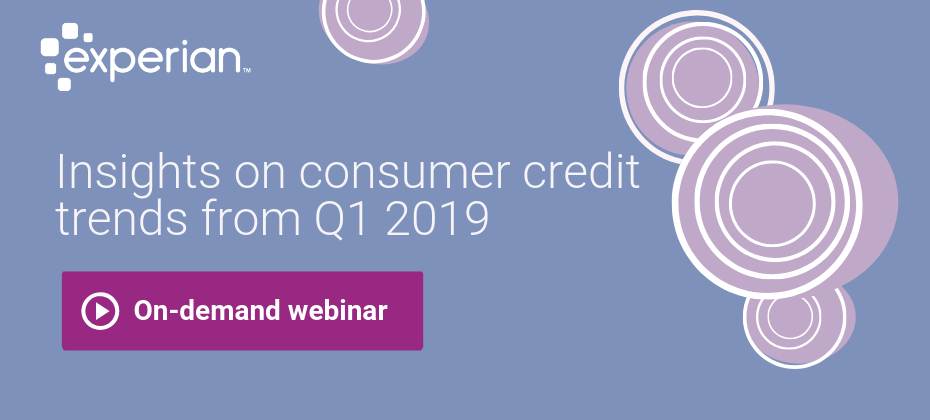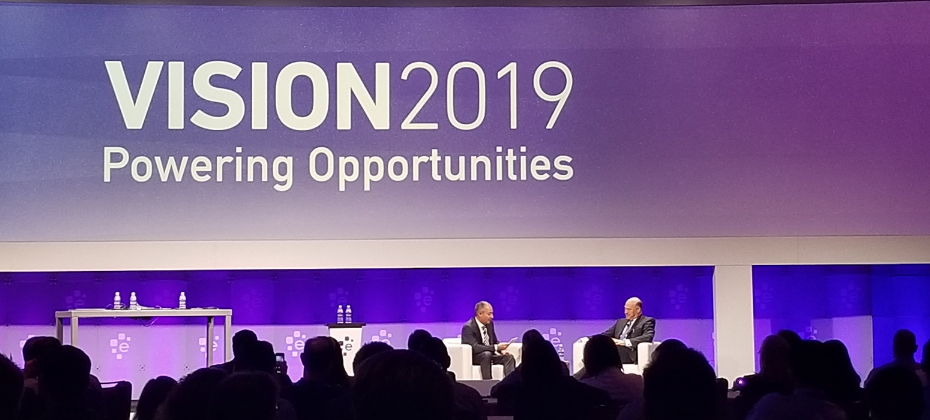Tag: mortgage

In financial crime, fraudsters are always looking for new avenues to exploit. The mortgage industry has traditionally been a primary target for fraudsters. But with the 30-year fixed-mortgage rate average above 7.19% for the month of September, it has caused an inherent slowdown in the volume of home purchases. As a result, criminals are turning to other lucrative opportunities in mortgage transactions. They have evolved their techniques to capitalize on unsuspecting homeowners and lenders by shifting their focus from home purchases to Home Equity Line of Credit (HELOC), as they see it as a more compelling option. Understanding mortgage fraud Mortgage fraud occurs when individuals or groups intentionally misrepresent information during the mortgage application process for personal gain. The most common forms of mortgage fraud include income misrepresentation, false identity, property flipping schemes, and inflated property appraisals. Over the years, financial institutions and regulatory bodies have implemented robust measures to combat such fraudulent activities. As the mortgage industry adapts to counter established forms of fraud, perpetrators are constantly seeking new opportunities to circumvent detection. This has led to a shift in fraud trends, with fraudsters turning their focus to alternative aspects of the mortgage market. One area that has captured recent attention is HELOC fraud, also known as home equity loan fraud. HELOC fraud: An attractive target for fraudsters What is a HELOC? HELOCs are financial products that allow homeowners to borrow against the equity in their homes, often providing flexible access to funds. While HELOCs can be a valuable financial tool for homeowners, they also present an attractive opportunity for fraudsters due to their unique characteristics. HELOC fraud schemes An example of a home equity loan fraud scheme is a fraudster misrepresenting himself to deceive a credit union call center employee into changing a member’s address and phone number. Three days later, the fraudster calls back to reset the member’s online banking password, allowing the fraudster to login to the member’s account. Once logged in, the fraudster orders share drafts to be delivered to the new address they now control. The fraudster then forges three share drafts totaling $309,000 and funds them through unauthorized advances against the member’s HELOC through online banking platforms. Why HELOCs are becoming the next target for mortgage fraud Rising popularity: HELOCs have gained significant popularity in recent years, enticing fraudsters seeking out opportunities with larger potential payouts. Vulnerabilities in verification: The verification process for HELOCs might be less rigorous than traditional mortgages. Fraudsters could exploit these vulnerabilities to manipulate property valuations, income statements, or other critical information. Lack of awareness: Unlike conventional mortgages, there may be a lack of awareness among homeowners and lenders regarding the specific risks associated with HELOCs. This knowledge gap can make it easier for fraudsters to perpetrate their schemes undetected. Home equity loans do not have the same arduous process that traditional first mortgages do. These loans do not require title insurance, have less arduous underwriting processes, and do not always require the applicant to be physically present at a closing table to gain access to cash. The result is that those looking to defraud banks can apply for multiple HELOC loans simultaneously while escaping detection. Prevention and safeguards There are several preventive measures and fraud prevention solutions that can be established to help mitigate the risks associated with HELOCs. These include: Education and awareness: Homeowners and lenders must stay informed about the evolving landscape of mortgage fraud, including the specific risks posed by HELOCs. Awareness campaigns and educational materials can play a significant role in spreading knowledge and promoting caution. Enhanced verification protocols: Lenders should implement advanced verification processes and leverage data analytics and modeling thorough property appraisals, income verification, and rigorous background checks. Proper due diligence can significantly reduce the chances of falling victim to HELOC-related fraud. Collaboration and information sharing: Collaboration between financial institutions, regulators, and law enforcement agencies is essential to combat mortgage fraud effectively. Sharing information, best practices, and intelligence can help identify emerging fraud trends and deploy appropriate countermeasures. Acting with the right solution Mortgage fraud is a constant threat that demands ongoing vigilance and adaptability. As fraudsters evolve their tactics, the mortgage industry must stay one step ahead to safeguard homeowners and lenders alike. With concerns over HELOC-related fraud rising, it is vital to raise awareness, strengthen preventive measures, and foster collaboration to protect the integrity of the mortgage market. By staying informed and implementing robust safeguards, we can collectively combat and prevent mortgage fraud from disrupting the financial security of individuals and the industry. Experian mortgage is powering advanced capabilities across the mortgage lifecycle by gaining market intelligence, enhancing customer experience to remove friction and tapping into industry leading data sources to gain a complete view of borrower behavior. To learn more about our HELOC fraud prevention solutions, visit us online or request a call. *This article leverages/includes content created by an AI language model and is intended to provide general information.

In today’s age, where speed and convenience are paramount, lenders must transform their digital income verification experience to meet customer expectations. Leveraging the benefits of instant verification is crucial to delivering a seamless experience. However, there are situations where instant verification may not be available or unable to verify customers. This is where the value of incorporating user-permissioned verification into your workflow becomes evident. Let’s explore the advantages of using a combination of instant and permissioned verification and how they can synergistically enhance coverage, reduce costs, improve efficiency, and deliver an exceptional customer experience. Instant verification: The epitome of efficiency and experience Instant verification technology enables lenders to access real-time customer data, making it the pinnacle of verification efficiency. Its ability to deliver immediate insights facilitates quick decision-making, ensuring a seamless and frictionless experience for lenders and customers. There are several benefits to streamlining your verification process, including: Speed and efficiency: Eliminate the time-consuming process of manually gathering and analyzing data to expedite loan approvals and reduce customer waiting times. Enhanced user experience: With real-time results, customers can complete their applications quickly and effortlessly, leading to increased satisfaction and higher conversion rates. Reduced risk: Assess applicant information promptly, maintaining the security and integrity of lending processes. Permissioned verification: Expanding coverage and engaging customers While instant verification technology offers numerous advantages, it may not always be available or suitable for every customer. This is where permissioned verification plays a vital role. By integrating permissioned verification into the verification workflow, lenders can expand coverage and keep customers engaged in a digital channel, reducing abandonment rates. The benefits of leveraging permissioned verification include: Convenience and speed: By granting permissioned access, customers avoid the hassle of uploading or submitting documents manually. This saves time and effort, resulting in a faster verification process. Increased coverage and reduced abandonment: Permissioned verification ensures a higher coverage rate by minimizing the potential for customer abandonment during the application process. Since the information is retrieved seamlessly, customers are more likely to complete the application without frustration. Privacy and control: Customers retain control over their data by explicitly granting permission for access. This enhances transparency and empowers individuals to manage their financial information securely. Creating a verification "waterfall" for optimal results To harness the combined power of instant and permissioned verification, lenders can establish a verification "waterfall" approach. This approach involves a cascading verification process where instant verification is the first step, followed by permissioned verification if instant verification is not available or unable to verify the customer. Example of Experian Verify’s automated verification waterfall. There are numerous advantages to adopting a “waterfall” approach, including: Cost efficiency: Lenders who prioritize instant verification save on operational costs associated with manual verification processes. The seamless transition to permissioned verification reduces the need for manual intervention, minimizing expenses and improving efficiency. Improved verification success rate: A verification waterfall ensures that alternative verification methods are readily available if the initial instant verification is unsuccessful. This increases the overall success rate of verifying customer data and reduces the likelihood of losing potential borrowers. Enhanced customer experience: The combination of instant and permissioned verification creates a streamlined and frictionless customer experience. Customers can progress seamlessly through the verification process, reducing frustration and increasing satisfaction levels. Propelling your business forward In the dynamic landscape of lending, a combination of instant and permissioned verification technologies provides significant value to lenders and customers. While instant verification delivers unparalleled efficiency and experience, incorporating permissioned verification ensures expanded coverage, reduced abandonment rates, and a seamless digital journey for customers. By implementing a verification "waterfall" approach, lenders can optimize verification processes, reduce costs, improve efficiency, and ultimately deliver an exceptional customer experience. Learn more about our solutions The advantages of instant and permissioned verification *This article leverages/includes content created by an AI language model and is intended to provide general information.

High property values and rising interest rates have priced many borrowers out of the market. In the face of declining home purchases, lenders are focusing on their portfolios and opportunities to expand borrower relationships. At the same time, portfolio health is increasingly important. Keeping a pulse on and successfully managing portfolio risk is just as important as portfolio growth. To effectively manage a mortgage portfolio, an understanding of the complete financial standing of a borrower, along with the most recent loan performance and property data characteristics, is crucial. Below we discuss three ways to analyze your portfolio to maximize performance. Portfolio risk While mortgage delinquencies remain well below pre-pandemic levels, rolling delinquency rates are seeing an uptick. In a recent study, we found that, of the at-risk population, over 24% may be at high risk of delinquency or default. Having the tools and resources to segment your portfolio and identify these borrowers is key to preemptively assisting or modifying loan terms and reducing risk exposure to the business. Growth and retention Did you know up to 64% of prime and above borrows may be ideal Home Equity Line of Credit (HELOC) candidates? Having the ability to segment your portfolio to identify borrowers who can tap into their home equity as a line of credit for upgrades, remodeling, or simply a rainy-day fund, will allow you to grow your originations pipeline while also supporting your mortgage retention strategy. To optimize your segmentation strategy, consider leveraging In the Market Models (ITMM) to identify borrowers with a high propensity to respond to HELOC offers. Through a retrospective analysis, we found that ITMM can improve campaign performance by over 700%. Similarly, a HELOC can be a prime option for borrowers with increasing debt. Through our newly launched solution, Mortgage Insights Dashboard for Servicing, we found that up to 46% of prime and above borrowers may be ideal candidates for debt consolidation. For this segment of your portfolio, a HELOC can consolidate high-interest debt from credit cards, retail cards, or even short-term loans. Peer analysis Like sports teams, many mortgage lenders and servicers are interested in comparing their performance against that of their peers. Are your portfolio runoff rates above, equal to, or below that of your competitors? In some instances, we’ve seen a lender’s runoff rate averaging 10% MoM higher than their peers. By comparing your portfolio performance against your peers (and the market) you can assess both the efficacy of portfolio recapture strategies and demonstrate loan quality to investors. While these are just a few examples of ways to analyze your portfolio, perhaps what’s most important is having the data, such as credit, income, DTI, and property information, needed for this type of intelligence available in one place. Partner with a provider that can offer you the mortgage servicing solutions to easily segment your portfolio to gain insights and inform ongoing strategic decisions. Learn more *Data charts source: Experian's Mortgage Insights Dashboard for Servicing

In recent blog posts, we’ve discussed growing in a down market and getting ahead with a proactive outreach and engagement strategy. In this article, we’ll focus on audience segmentation and multichannel marketing. As the market has shifted, effective cost management is a top priority. Lenders who get the most bang for their buck tend to use data to create their audience, segment and message. Best practice #1: audience segmentation It’s hard to beat the combination of credit and property data for mortgage lenders. Obtaining a holistic consumer view and property details (if they’re a homeowner), can help lenders determine the best mortgage product and refine their messaging. Many of our partners have great success leveraging a combination of property and credit insights to identify consumers for a home equity line of credit (HELOC) or new first mortgages. Let’s look at HELOC as an example. From a process perspective, we use property data to identify borrowers with properties that qualify for the lender’s HELOC program – sufficient equity, owner occupied, no tax liens, not listed for sale, a value below their upper lending bound, etc. Once the initial population is identified, we further segment their target population by adding key credit insights, such as current score and outstanding unsecured debt. This allows the lender to identify borrowers who qualify for their HELOC program and do specific outreach for either debt consolidation or remodel. By performing the equity and credit analytics with a single vendor, the lender can increase their speed to market. The results? Lenders succeed by quickly reaching the right borrowers, with the right offer and message. Additionally, they don’t waste money on or disappoint applicants who don’t meet their program guidelines. Best practice #2: refining the message The next best practice I’d like to focus on is refining the message with relevant demographic and consumer behavior data. Experian studied the differences among consumers who recently purchased a home, those who recently secured a HELOC, and the general consumer population. Look at these four categories from our Mosaic Group and consider how you would adjust your messaging if you really know your prospect? Might you incorporate different imaging for a Power Elite homeowner in your HELOC campaign than a Flourishing Family to whom you are marketing a first mortgage? Or consider how different decision-making styles would impact the information you highlight in your outreach? Look at the difference between HELOC borrowers and first mortgage borrowers in terms of their decision-making style. Different messaging will appeal to a consumer who is a brand loyalist versus someone who is a savvy researcher. Best practice #3: omnichannel marketing strategy Finally, let’s focus on how best to reach the consumer. Not only is it important to meet consumers on their preferred channel, but a best practice is to execute an omnichannel strategy. We increasingly see lenders using emails in prescreen campaigns with invitations to apply, or ITAs, across multiple communication channels. Look at the overall research for email, text, and direct mail. Increasingly, savvy marketers are asking us for emails in their prescreen campaigns, and it’s no surprise. Based on the research, a tailored email campaign can be very effective. Perhaps most surprising is the level of mortgage borrower engagement in streaming TV! This is just the tip of the iceberg in terms of how data can be sliced and diced to drive your omnichannel engagement strategy. In short, when executing a mortgage marketing campaign, it’s important to leverage available data for audience segmentation. Once your audience is identified, you’ll want to refine your message to resonate with each segment. Lastly, instituting a multichannel marketing strategy is key to ensuring you’re getting in front of your audience in the channel they’re most likely to engage. By adopting these best practices, you’ll reach the right borrower, with the right message, in the right channel, which, in-turn, will help boost the ROI of your marketing program. To learn about Experian Mortgage solution offerings, click here. Learn more

Driving growth in a down mortgage market can be tricky. It’s a mad scramble to obtain quality mortgage leads that convert into profitable loans. At Experian Mortgage, we have a front row seat into the efficacy of different lead generation strategies, and what we know for certain, is that data matters in both the audience creation and outreach approach. I’ve compiled several best practices for identifying qualified prospects early in the homebuying journey and using analytics to focus your outreach on those most likely to convert. Best practice #1: credit-based triggers First, let’s focus on borrower-behavior triggers, as they’re key for getting ahead of the competition. I occasionally hear skepticism about tried-and-true credit-based prospect triggers, but many find them indispensable. Credit triggers alert you when borrowers apply for credit and when other indicators meet your specific lending criteria, including credit scores, score trends, credit limits, utilization and much more. They’re effective – and not just for big lenders. Our clients leverage credit-based triggers to quickly pursue “hot leads,” and have reported higher response rates, lower acquisition costs and revenue growth. Best practice #2: property listing triggers Another borrower behavior to watch is listing a property for sale, which can be done using property listing triggers. You can use listing triggers to monitor current customers – and with Experian, you can prospect for new customers outside your portfolio. One of our clients instituted property listing triggers and immediately identified 40,000 homeowners in their footprint who had recently listed a property for sale. Experian research shows that a homeowner lists their property for sale, on average, 35 days before applying for a new mortgage. This means this lender had over a month to reach those consumers with a tailored message. Now that’s getting a jump on the competition! But what about those homeowners who list a property for sale but don’t move? We hear anecdotally about more homeowners putting their homes on the market to see what offers they can get. According to recent data, a higher percentage of listings fail to sell today than last year. While property listing remains one of the most predictive behaviors for purchase, there’s room to optimize. Whether your prospect came to you via a property or credit trigger, there’s an opportunity to improve your ROI by identifying trigger leads most likely to convert. Best practice #3: in-the-market models A key best practice in audience segmentation is to incorporate in-the-market models (ITMM). A good model is based on sophisticated analytics across hundreds of data elements and millions of loan applications. Additionally, a good model is tailored to your product. A consumer in the market to buy their first house will “look” very different than a consumer in the market for a Home Equity Line of Credit (HELOC). Experian clients are doing two impactful things with ITMM. First, they create their audience list by bundling ITMM with credit, income, and property data to identify qualified consumers likely to be in the market soon. Second, they optimize an existing marketing list. However, when it comes to a mortgage lead generation program, you can only optimize what you measure. Experian has been helping clients by analyzing their lost leads and lost loans. Several clients recently asked us to analyze their efficacy with marketing lists originating from digital mortgage lead aggregators (i.e., lists of consumers who sought information online about mortgages). I’ll focus here on the leads who did NOT originate a mortgage with our clients, but DID open a tradeline with someone else. My first observation is that prospects who opened a tradeline were significantly more likely to open a credit card than a mortgage. My second observation is when the prospect opened a mortgage loan with a different institution, 80% of the time that lender was a non-bank. This is higher than the current non-bank share of the market, which indicates non-banks are aggressive with their leads and poised to grow their share. Here’s where ITMM comes into play. By incorporating an ITMM specifically for your product – HELOC, purchase, refinance – you can focus attention on borrowers most likely to open a mortgage. In summary, instituting credit and property triggers is a critical best practice and will open the door to a plethora of prospects. If you want to level up your marketing strategy, incorporating an ITMM is key and will help you segment the trigger leads and home in on those that are most likely to convert. Be sure to check out the final blog post in this series, Lead Conversion Through Tailored Messaging and a Multichannel Mortgage Marketing Strategy. To learn about Experian Mortgage solution offerings, click here. Learn more

Today’s mortgage market is challenging. Mortgage lenders and servicers will need to focus on product expansion to continue to grow their business. In a recent Q&A session, Susan Allen, Head of Product for Experian Mortgage, shared best practices for leveraging data for profitable growth.Q: At a high level, how can mortgage lenders and servicers grow their businesses?A: There are a lot of options to increase pipeline. One best practice we’re seeing now is to consider expanding both your product suite and your footprint. Very few lenders offer a comprehensive set of solutions in a national footprint. But demand is strong for solutions that go beyond traditional 30-year fixed-rate mortgages, including options to tap home equity. These types of products can help you grow your business by exposing you to new borrowers and broadening your relationships with clients. For example, we see several clients, even non-banks, venturing into credit cards and personal loans to meet their customers’ broader financial needs.Q: You mentioned demand for home equity solutions is strong. What should lenders consider when it comes to home equity loan growth strategies?A: The current record level of untapped equity makes home equity lines of credit (HELOCs) attractive for borrowers to use for debt consolidation, remodeling or to add to their rainy-day fund. For lenders to decide whether HELOCs would be profitable for their business, they should look broadly at data about borrowers, volumes and indicators of profitability, such as credit lines and utilization.Q: It’s one thing to talk about the HELOC market, but does Experian have any home equity data to show what’s happening in this space?A: Absolutely. We’re seeing several things when it comes to home equity data. First, HELOC volumes have doubled since January 2021, which indicates strong borrower interest. Second, we know that home prices are at record highs across the board, and we see this record of “tappable” equity translating into credit lines well over $100,000. What’s more, we’re seeing borrowers drawing down consistently at $37,000 on average, which is a healthy and profitable utilization rate. Lastly, greater than 90% of HELOC borrowers have a prime or super prime credit score. Our data shows HELOC borrowers have higher credit scores than new purchase borrowers. Additionally, conventional wisdom says that HELOCs are for seasoned homeowners, but according to the data, the younger generation of homeowners has tripled their HELOC originations. I’ve been in this industry for a long time, and to be honest, this shocked me. This makes it clear that it’s always important (especially for industry veterans) to constantly update our understanding of current market dynamics. Q: Wow, it sounds like expansion into home equity solutions is a no-brainer. What am I missing? A: HELOCs are a strong and growing market segment. But it’s not sufficient to look only at opportunity. We must also use the best data at our disposal to evaluate risk. With HELOC performance impacted by property values, recent concern over the stability of home prices is causing some lenders to pause. Clients tell us they would like to expand their HELOC offerings but aren’t sure when or where to start. Q: So, what’s the answer here?A: Data is key to taking the guesswork out of decisions. When it comes to HELOC expansion, lenders voice concern specifically about home price forecasts. Although it is notoriously hard to forecast home prices, you can use actual, current data to inform decisions about where and when to expand a home equity portfolio. For example, lenders can use listing data to gauge markets shifting from a “seller’s market” to a “buyer’s market.”Q: Susan, this has been a great discussion. Any final thoughts? A: As I’ve shared, great opportunities exist. With best-in-class data and analytics, lenders can find these opportunities and propel their businesses forward. Be sure to read the other blog posts in this series:Getting Ahead with a Proactive Mortgage Outreach and Engagement StrategyLead Conversion Through Tailored Messaging and a Multichannel Mortgage Marketing Strategy To learn about Experian Mortgage solution offerings, click here.

Last year, my wife and I decided to take advantage of Experian’s remote-work policy and move back to my hometown, so we could be closer to family and friends. As excited as we were, the idea of selling and buying a home during the market frenzy was a little intimidating. Surprisingly, finding a home wasn’t our challenge. We lucked out and found what we were looking for in the exact neighborhood we wanted. Our biggest challenge was timing. Our goal was to sell our current home and immediately move into the new one, with no overlap of payments or having to put our belongings in storage while we temporarily stayed with family (or in a short-term rental). Once we sold our home, we had exactly 30 days to close on our new home and move in. Since this wasn’t our first rodeo, I felt confident all would go smoothly. Things were on schedule until it came time to verify our income and employment. Who knew something so simple could be so hard? Let me share my experience with you (crossing my fingers you have a smoother experience in place for your borrowers): Pay statements — I was initially asked to provide pay statements for the previous two months. Simple enough for most borrowers, but it does require accessing your employer payroll system, downloading multiple pay statements and then either uploading them to your lender portal or emailing them to your loan officer (which no borrower should be asked to do). This took me less than 30 minutes to pull together. Verification report — After reviewing my pay statements, my lender told me they needed an official verification report on my current and previous employers. At the time, Experian had just acquired Corporate Cost Control (now part of Experian Employer Services), a company that offers verification-fulfillment services for employees, employers and verifiers. I told my lender I could provide the verification report via Corporate Cost Control and they agreed it would be sufficient. This took me several days to figure out. HR information — Just when I thought we were good, I received an email from my lender asking for one last thing — the HR contact information of my current and previous employers. Obtaining this information from Experian was easy, but I didn’t know where to start with my previous employer. I ended up texting some former colleagues to get the information I needed. This too took several days to figure out. Finally, I got the call from my lender saying everything checked out and I was good to proceed with the underwriting process. Whew! What I thought would take 30 minutes ended up taking a full week and threatened our ability to close on time. And not to mention was a massive headache for me personally. This isn’t how you want your borrowers to feel, which brings me to the title of this blog, it’s 2022, why is mortgage employment verification so painful in today’s digital age? Other industries have figured out how to remove pain and friction from their user experiences? Why is the mortgage industry lagging? Mortgage employment verification made easy If it’s lack of awareness, you should know there are tools that can automate verification decisions. Experian Verify™ is a perfect example where mortgage lenders can instantly verify a borrower’s income and employment information (both current and previous employers), without needing to ask the borrower to track down pay statements or HR contact information. You can literally verify information in seconds — not hours, days, or weeks. And the service supports Day 1 Certainty® from Fannie Mae — giving you increased peace of mind the data is accurate and trusted. This not only improves the borrower experience but increases efficiency with your loan officers. Tools like Experian Verify are a win-win for you and your borrowers. So, what are you waiting for? Modernize your experience and give your borrowers (like me) the frictionless experience they deserve, and if we’re being honest, are starting to demand. Learn more about income and employment verification for mortgage

Mortgage lenders are no stranger to income and employment verification. Leveraging a third-party solution provider for automated verifications is a standard practice in mortgage underwriting. Yet many lenders still struggle with time-consuming and complex verification experiences, which can be manual, inefficient and painful for borrowers. Since introducing Experian Verify™ to the market, we’ve had countless conversations with key players in the industry – from the largest banks to small independent mortgage brokers and everything in between. Through these conversations, we’ve learned quite a bit about some of the dos and don’ts when it comes to implementing a successful strategy for income and employment verification for mortgage. Lead with instant verification Digital transformation has forever changed borrower expectations for online experiences. The first key to a successful verification strategy is starting your workflow with an instant verification solution. This allows you to verify information in real time, delivering a completely frictionless experience for you and your borrowers. Consider building a waterfall process For instances when a borrower’s income and employment information is unable to be verified through an instant verification solution, add a consumer-permissioned (bank or payroll) option as a backup. Cascading from one digital solution to the next will ensure you can verify borrower information in seconds or minutes, as opposed to days or weeks. The goal is to prevent as many borrowers as possible from going through a costly manual process. Tap into unique data sources Many verification solutions in market today tap into the same data sources, which can make it difficult to differentiate between solutions and measure additive benefits. When evaluating options, look for verification solutions that leverage unique and exclusive data sources – allowing you to optimize hit rates and maximize value. Avoid a “one-size-fits-all” approach There is no silver bullet. Every market is unique and every lender has different needs. Your verification requirements are likely specific to your business, which means you need to leverage verification solutions that offer flexible options and enable you to build a verification experience that works best for you and your borrowers. Find a solution provider who’s all in It’s important to find a solution provider where income and employment verification isn’t just a “side hustle,” but is core to their business strategy. Find a provider who is fully committed – delivering new innovations, investing in key partnerships, maximizing accessibility through leading LOS / POS technology providers, and offers eligibility for key industry programs, such as Day 1 Certainty® from Fannie Mae. Challenge the status quo Many lenders have an existing relationship with a third-party solution provider. But it’s important not to put all your eggs in one basket. If your existing provider is not meeting all your needs, challenge the status quo. Consider adding a second provider to the top of your waterfall to help contain costs and tap into unique data that is not available from your existing provider. Ready for further insight? Learn more about income and employment verification for mortgage.

There are many facets to promoting a more equitable society. One major driver is financial inclusion or reducing the racial wealth gap for underserved communities. No other tool has impacted generational wealth more than sustainable homeownership. However, the underserved and underbanked home buyers experience more barriers to entry than any other consumer segment. It is important to recognize the well-documented racial and ethnic homeownership gap; doing so will not only benefit the impacted communities, but also elevate the level of support of those lenders who serve them. What are we doing as an industry to reduce this gap? Many organizations are doing their part in removing barriers to homeownership and systemic inequities. In 2021, the FHFA published their Duty to Serve 2021 plans for Fannie Mae and Freddie Mac to focus on historically underserved markets. A part of this plan includes increasing liquidity of mortgage financing for lower- and moderate-income families. Fannie Mae and Freddie Mac each announced individual refinance offerings for lower-income homeowners – Fannie Mae’s RefiNow™ and Freddie Mac’s Refi PossibleSM. Eligible borrowers meet requirements including income at or below 100% area median income (AMI), a minimum credit score of 620, consideration for loans in forbearance and additional newly expanded flexibilities. As part of the plan, lenders will lower a borrower’s monthly payment by at least a half a percentage point reduction in their interest rate, which can translate into hundreds of dollars of savings per month and sustain their homeownership. Experian has the tools to help mortgage lenders take advantage of this offering As a leader in data, analytics and technology, we have the tools needed to help lenders recognize opportunities to be inclusive and identify borrowers who may be eligible for Fannie Mae’s and Freddie Mac’s lower-income refinance offerings. To illustrate, we performed a data study and identified over 6M eligible mortgages nationwide (impacting over 8M borrowers) for this plan, and some lenders had as much as 30% of mortgages in their portfolio eligible with lower- and moderate-incomes.1 These insights can have a positive impact on the borrowers you serve by promoting more inclusion and benefit lenders through improved customer retention, strengthened customer loyalty and an opportunity to continue to build generational wealth through housing. We are committed to enabling the industry's DEI evolution As the Consumer’s bureau, empowering consumers is at the heart of everything we do. We’re committed to developing products and services that increase credit access, greater inclusion in homeownership and narrowing the racial wealth gap. Below are a few of our recent initiatives, and be sure to check out our financial inclusion resources here: United for Financial Health: Promotes inclusion in underserved communities through partnerships and have committed to investing our time and resources to create a more inclusive tomorrow for our communities. Project REACh (Roundtable for Economic Access and Change): brings together leaders from banking, business, technology, and national civil rights organizations to reduce barriers that prevent equal and fair participation in the nation’s economy, and we are engaged with the Alternative Credit Scoring Utility group as part of this initiative. Operation Hope: Empowers youth and underserved communities to improve their financial health through education, so they can thrive (not just survive) in the credit ecosystem so they can sustain good credit and responsibly use credit. DEI-Centric Solutions: From Experian Boost to our recent launch of Experian Go, we offer a variety of consumer solutions designed to empower consumers to gain access to credit and build a brighter financial future. What does this mean for you? Our passion, knowledge and partnerships in DEI have enabled us to share best practices and can help lenders prescriptively look at their portfolios to create inclusive growth strategies, identify gaps, and track progress towards diversity objectives. The mortgage industry has a unique opportunity to create paths to homeownership for underserved communities. Together, we can drive impact for generations of Americans to come. Let’s drive inclusivity and revive the American dream of homeownership. 1Experian Ascend™ as of November 2021

2020 is finally over – been there, done that. And while it seems safe to say most everyone is all too eager to kick off a new calendar year, the reality is we’re still reeling – and will continue to reel – through the economic impacts of the COVID-19 global pandemic. As we inch closer to the one year marker of when many businesses were sent home – across all industries, including those tech-inclined and those less so – the understatement of the year is that the world has since changed as have consumer communication preferences, how businesses and customers interact, tweaked definitions of privacy, and new (heightened) expectations of evolving a positive customer experience with minimal friction and maximum security. While last year’s predictions of entering a new set of Roaring 20’s may not have panned out the way we had initially imagined, many of the trends thought to evolve over the last 365 days did. As we all look toward a post-pandemic world, here are six top trends to keep tabs on throughout 2021. 1. Data Data as a commodity and as a business differentiating factor has reached an all-time high. It’s doing more across the entire customer lifecycle and can elevate businesses to best prep for growth, especially as consumers begin to look for more financial products (whether looking for financial assistance as the CARES Act accommodation period ends, or to take advantage of the booming mortgage industry, etc.). Data can also give more insights into consumers than ever before. Far beyond just credit scores and financial data, today’s data sets can reveal consumers’ lifestyle preferences, their preferred communication channels, their rental histories, and so much more. With alternative credit data and non-traditional data (including consumer-permissioned data), businesses can get a holistic picture of their customers’ payment behaviors. That streaming media service monthly payment may seem minimal, but now could increase your credit score through Experian Boost. Experian is still making big strides in all efforts to use data for good. As of December 31, 2020, Experian Boost has “boosted” Americans’ credit scores nearly 47 million points. Additionally, throughout 2020, Experian worked with financial institutions and credit furnishers to continue to put consumers first and serve as the consumer’s bureau. Coming up in 2021? Using data for differentiation, which can ultimately drive business growth. From instant prescreens to identifying your best customers (and offering them cross-sell and upsell opportunities to increase retention and customer loyalty) to helping customers that may be on the brink of financial distress and connecting them with management solutions to help them get back on their feet, data can help businesses – and their customers – get there. 2. Fraud and Friction (And the Reduction of Both) With the pandemic, fraud saw increases across the board. Here are just some quick stats: 200% increase in first-time online banking usage immediately following shelter-in-place orders (Aite Group, “Workplace Distancing: Adapting Fraud and AML Operations to COVID-19,” April 2020) 652% year-over-year increase in records found on the dark web (Experian CyberAgent technology) 50% increase in human farming – real people being hired for purposes of fraud – month-over-month in March 2020 (Arkose Labs) And, unsurprisingly, consumer and business sentiments toward fraud are also evolving with these increasing trends. For example, according to Experian’s North America Trends Report, half of consumers continue to site security as the most important factor of their online experience. Additionally, there’s been an increase in the percentage of businesses who have recently increased or are planning to increase fraud budget from 76% in 2019 to 89% as of Sept. 2020. More complex phishing schemes and increased fraudster activity is due in part to numerous industries having to shift to online processes and business transactions overnight. Adoption for mobile wallets has jumped 11% since July 2020, according to the 2020 Global Insights Report. Systems and technology that were not ready or not armed with the necessary infrastructure left critical access points open that could be exploited by fraudsters. Fraud exists across the customer lifecycle, at every access point. And while fraud is complex, with Experian as your partner, solving it isn’t. Innovative technology enables businesses to prevent fraud by identifying credible customers and applying the correct treatment to the riskiest consumer and business accounts. We can help you develop a layered risk management strategy so you can focus resources on growing and protecting your customer relationships. 3. A New Administration – Changing of the Guards on the Regulatory Front With the new year enters the inauguration of a new president and administration. Though there is still much to be determined, certain areas are drawing a lot of attention with this changing of the guards. The highlights? The CFPB. Priorities and leadership could change. With COVID-19 top of mind, it is likely there will be aggressive agendas put forth to help protect the millions of consumers who have suffered economic distress and harm as a result of the pandemic. Data Portability. With an increased consumer appetite to port their data, questions and concerns around data security – and how to verify for a third party asking for the data – are also on the rise. There are a number of issues facing financial institutions around data portability, one of the largest being defining the line between consumer account information and proprietary data. All things privacy – state vs. national bills. The debate continues on how to move forward (whether privacy legislation will be handled by the states or at the national level), but for now it seems there is more progress at the state level. California was the first state to push through state-level privacy legislation in the form of the California Consumer Privacy Act of 2018. Twenty-four states are considering legislation that would require consent before collecting or disclosing personal information with third parties. 4. Analytics + Digitalization – Smarter, Better, Faster COVID-19 accelerated digital transformation for many. Some companies were ready, having already started making the headway in years prior, while others struggled – and some continue to struggle. The pandemic – and its corresponding recovery – is reason now, more than ever, to get some of your digital transformation priorities checked off of your list. Your customers demand it and your business needs it. Tackling analytics and digitalization not only brings your business up to speed, but improves your decisioning, enhances your offerings, and enables better platforms and data usage. In addition to digitalization, artificial intelligence for credit decisioning and personalized banking can also be expected to be a top trend, especially AI that is ethical and explainable, as will the increasing adoption and implementation of cloud computing. As consumer experience continues to reign supreme, any and all technology to enhance and improve that experience – think chatbots and virtual assistants – will also likely increase in presence. 5. Verification & Identity Identity has been a trending topic over the last few years, brought on by increasingly digital lifestyles and the intersection of personalization, frictionless transactions and adequate security. Identity verification and verification of other information such as income, employment and the like are increasingly needed in a today’s pandemic and tomorrow’s post-pandemic world. Leveraged across the lifecycle and during critical customer interactions, the need is especially heightened for insights, data accuracy, and diversification of data sets – to name a few. And while it was already established that identity verification is not just for marketing services, there are now even greater needs for financial institutions to be able to confidently know that their customers are who they say they are. Some areas to keep your eye on in 2021? Identity, income, assets and employment. 6. Redefining the Modern Mortgage As has been a common trend, spurred by the disruption caused by COVID-19, the mortgage industry is one of the many to have a magnifying glass brought to its areas for improvement. Some of those areas include operational efficiency, digital adoption and transparency. In line with the better and faster needs that lenders are continually trying to pace with, the need for speed is hitting mortgage originations, with an ideal situation outlined as closing in 30 days or less. Creating operational efficiencies through faster, fresher data can be the key for lenders to more accurately assess a borrower’s ability to pay upfront. Additionally, now, as most mortgage lenders are breaking previous origination records by a landslide (thanks pandemic), there’s new focus on other performance indicators. With such impetus, the modern mortgage is constantly evolving, incorporating customer-centric facets including a seamless digital process, providing meaningful customer experiences and leveraging the latest and greatest technology to better future-proof the industry through scalable technology, while aiming to reduce costs. For all your needs in 2021 and beyond, Experian has you covered. Learn More

Rays of hope are beginning to shine in the economy that suggest the U.S. may have moved beyond the most acute phase of the economic crisis. The housing sector, in particular, looks poised to regain momentum and perhaps lead the path towards stabilization in the second half of 2020. A “V-Shaped” rebound in mortgage applications Despite record levels of unemployment and widespread economic uncertainty, homebuyers have returned to the market with conviction. After shelter-in-place restrictions curtailed open-house visits and crimped buyer demand in early April, applications to purchase a home have risen for six consecutive weeks, according to the Mortgage Bankers Association. The latest data for the week of May 22nd, indicate that purchase applications were 9% higher than during the same period in 2019. If this trend continues, it will show that significant pent-up demand exists in the housing market that may be able to offset some of the lost spring buying season. April new home sales far exceed expectations After declining by 13.7% in March, new home sales rose a modest 0.6% in April. While this was only a slight gain, it was considerably above economists’ projections of a fall of 20% and may mark the turning point in the downtrend. Since the recording of new home sales data occurs when the purchase contract is signed or a deposit is accepted – and is typically for a house that hasn’t been built yet or is currently under construction – it provides a gauge of how buyers feel about their future economic prospects. Building a home also requires hiring new construction workers, buying building supplies, and supporting a host of ancillary industries, thus making it an indicator of further economic activity. Some of the increase in demand for new homes may have been driven by coronavirus quirks. The number of existing homes on the market is at record lows and many people may have been reluctant to put their home up for sale and have buyers tour as health concerns remain. Buyers, as well, may have preferred to steer clear of occupied homes or were unable to make in-person visits due to shelter-in-place restrictions. This lack of options for home buyers, coupled with record-low mortgage rates, likely drove sales of new homes higher. However, for the same reasons why new home sales rose, pending sales for existing homes fell sharply. In April, the National Association of Realtors reported that sales declined by 21.8%, which is the largest drop in ten years. Home prices continue to gain ground Even with shelter-in-place restrictions dampening buyer demand in early April, home values have continued to rise. This is because the supply of homes on the market also contracted, resulting in a simultaneous drop of demand and supply. According to Zillow Research, the total inventory of homes for sale is down roughly 20% from this time last year. With fewer competing homes on the market, sellers have been reluctant to slash prices and are betting that the lack of options and low mortgage rates will keep buyers on the hook. In April, U.S. home values rose 4.3% from the year before. The states with the strongest growth were Idaho (9.8%), Arizona (8.5%), Maine (7.6%), and Washington (7.4%). It will be interesting to see if this pattern of growth changes as newly implemented work from home policies may shift where people prefer to live and work. Why it matters The housing market has an outsized influence on the overall direction of the U.S. economy. Housing is not only is a big contributor to economic growth, but many owners have a large portion of their wealth tied up in their home. If the housing market can find its footing in the second half of 2020, then it could set the stage for an eventual economic recovery. Learn more

After two consecutive emergency meetings in March and numerous stimulus announcements, the Federal Open Market Committee (FOMC) finally got back on track and wrapped up their standard two-day meeting on April 29th. While Fed officials did not make any changes to the federal funds rate – which is currently sitting near zero - or to the level of purchases of treasuries and mortgage-backed securities, they did provide a glimpse into how long rates are likely to remain at their current levels. Hint: It is going to be a while. Understanding the Fed’s statement In order to get a clearer picture of what the Fed is thinking, skip the headlines and go straight to the source – the post-meeting press release. Here is the most important paragraph from their statement (with the key components underlined): “The ongoing public health crisis will weigh heavily on economic activity, employment, and inflation in the near term, and poses considerable risks to the economic outlook over the medium term. In light of these developments, the Committee decided to maintain the target range for the federal funds rate at 0 to 1/4 percent. The Committee expects to maintain this target range until it is confident that the economy has weathered recent events and is on track to achieve its maximum employment and price stability goals.” Just by taking the statement at face value, it is clear the Fed is going to keep rates where they are for some time, but for how long? That depends on how the key phrases are interpreted. The first, “over the medium term”, seems simple but requires some detective work. What does “medium term” mean? In the post-meeting press conference, the Fed Chairman was asked this question and he alluded that it likely means a year or more. So, there is part 1 - the Fed expects to keep rates near zero for at least a year. That is not all that surprising, but it does provide a floor: a minimum timeframe. Key phrase 2, however, requires a bit more effort but is where the real story lives. The dual mandate is no longer a balancing act “The Committee expects to maintain this target range until it is confident that the economy has weathered recent events and is on track to achieve its maximum employment and price stability goals.” There is a lot of economics in that sentence. The Fed has been mandated by Congress to achieve two primary goals – maximum employment and price stability (inflation near 2%). These two goals, or the “dual mandate” as they are often referred to, seem simple but have historically been at odds. The thinking went that if the Fed kept interest rates low to support employment, then inflation would rise. And if the Fed increased interest rates to control inflation, then employment would decline. A delicate balance - at least it was thought. Somewhere in the last couple of years Fed officials have realized that even after a decade of near-zero interest rates following the financial crisis and very-low levels of unemployment, inflation has remained persistently below their 2% target. Something has broken in the relationship. This is key, because it means that the Fed now feels free to keep interest rates exceptionally low in order to get employment back on track, without having to worry about inflation; and may in fact need to keep rates lower for longer in order to boost inflation. Both sides of the dual mandate now appear to require low rates. Chasing “maximum employment” With inflation no longer a priority for Fed officials at the moment, their sights are set squarely on achieving the maximum employment portion of the mandate. But what does it mean to achieve “maximum employment”? Well, it is an elusive target, but in general, it is the point at which rising wages leads to higher inflation – the result of businesses increasing pay to compete for a shrinking supply of workers. What is known is that even when the unemployment rate was at a 50-year low of 3.5% in early 2020, wages were not rising much. Which indicates that the economy may have been near maximum employment but was not quite there yet. So, to achieve maximum employment, unemployment needs to be somewhere near 3.5% and that could take some time, a long time. Current range estimates show the unemployment rate rising to anywhere between 12 – 30% in the coming months. And a recent report out of the Congressional Budget Office projected that unemployment will still be around 9.5% at the end of 2021. The last time the unemployment rate was at 9.5% was right after the financial crisis, and from that point it took nearly a decade for the rate to fall to 3.5%. And while it is not expected that the current crisis will be as prolonged as the previous one, it still provides a reference point as to how long it can take to recover job losses. So how long does the Fed expect to keep rates near zero? One year at the very minimum, easily two years, and perhaps up to a decade.

Consumer credit trends are continuously changing, making it imperative to keep up with the latest developments in originations, delinquencies on mortgages, credit cards and auto loans. By monitoring consumer behavior and market trends over time, you can predict and prepare for potential issues within each market. In this 30-minute webinar, our featured speakers, Gavin Harding, Experian Senior Business Consultant, and Alan Ikemura, Experian Data Analytics Senior Product Manager, reveal Q1 2019 market intelligence data and explore recent advances in consumer credit trends. Watch our on-demand webinar

“Experian is transforming our business from a traditional credit bureau to a true technology and software provider,” said Craig Boundy, CEO of Experian, North America, as part of his opening remarks Monday morning to kick off the 2019 Experian Vision Conference. “We are committed to working as a force of good.” Covering the themes of financial inclusion, giving consumers control of their lives and better outcomes, a digital-first society, and the latest trends in fraud and security, Boundy addressed a crowd of over 850. Alex Lintner, Experian’s Group President, gave a quick history of the past 3,000 years, from the first credit card, to the addition of wheels to a suitcase, to the iPhone and artificial intelligence. “Innovation is not invention,” Lintner said. He gave the example of the iPhone and how a tear down analysis revealed there were no new elements; however, it was the translation of an idea into a good or service that benefited everyone (as the entire audience raised their hand when asked who had a smart phone). Lintner’s mainstage presentation also featured three live demos, including how the Ascend Technology Platform takes complex model building and outputs from days and weeks to a few clicks, to the incorporation of Small Business Financial Exchange (SBFE) data into the Ascend Analytical Sandbox (incorporating more than 17 years of small business tradeline data and 150 predictive attributes) and lastly, Experian Boost, which according to a live tracker, has boosted consumer credit scores by a total of 3.2 million points, as of this morning, since its launch eight weeks ago. Keynote Speaker: Gary D. Cohn Gary D. Cohn, Former Director of the U.S. National Economic Council, was Monday morning’s keynote speaker. He weighed in on the domestic and global economy, policy issues, financial institutions’ responsibilities and some of his predictions. Cohn brought attention to the ever-changing financial services space, including new forms of encryption and the world of biometric security, calling the financial services industry the “tip of the spear” when it comes to the digitization of the world. Session Highlights - Day 1 Machine Learning From the building blocks of neural networks to artificial intelligence, machine learning has been used in the areas of financial services that do not have adverse actions – think fraud, ID, collections. As we look to harness machine learning for models and other spaces (including adverse action), it’s important to delineate descriptive data (what’s happening now); predictive data (what’s happening in the future); prescriptive data (what am I going to do now); and cognitive data (are we asking the right question?). In addition, it’s necessary to address the five advanced analytic drivers including customer experience, cost, risk and loss, growth and compliance. Home Equity & Lending US macroeconomic trends show consumer confidence is still on an upward trend. While investor confidence is a little volatile, the GDP remains strong (though slightly slowing down) and unemployment is low and forecasted to remain low. Since 2006, the US hasn’t returned in the HELOC space. Mortgage and personal loans are up 20% and 13% respectively, while mortgages have dropped 1% and HELOCs have dropped 2%. With an estimated market potential of over $700 billion, HELOCs may be an untapped credit line given the strength of the economy. Identity Evolution From dumpster divers, aka pulling receipts out of dumpsters behind businesses, to today’s identity-based authentication, there’s been an evolution of how identity is defined as well as its corresponding risks. According to Experian’s Global Fraud & Identity Report, 74% of consumers value security as the most important part of the online experience (over convenience and personalization). However, 74% of consumers abandoned a shopping session that required too much information, and 72% of consumers said they were willing to share more data if it meant a seamless experience. What does this mean? Consumers want it all. Identity today now includes proxies and activity, which can also mean greater risk. Because of aggregators and other associated entities acting on a consumer’s behalf, there are lots of nuances that will need to be looked through. Consumer-Permissioned Data In order to be more consumer-centric, there are four levers through which consumers are given control: data accuracy, knowing their financial profile, the ability to improve their scores (via Experian BoostTM and UltraFICOTM) and protecting consumers when they permission access to their identity credentials. Using Experian Boost, consumers have seen an average increase of 13 points for consumers with positive changes. Additionally, using alternative credit data, financial institutions can score more people and score more accurately. One hundred million consumers could gain greater access to credit with consumer-permissioned data sources. --- Meanwhile, the tech showcase featured over 20 demos covering alternative data, digital credit marketing, consumer empowerment, fraud and identity, integrated decisioning and technology. More insights from Vision to come. Follow @ExperianVision and #ExperianVision on Twitter to see more of the action.

The economy remains steady, maintaining a positive outlook even though the GDP growth slowed in the first quarter. Real estate is holding ground even as rates rise. We’ve reached a 7-year high in 30-year fixed-rate mortgages, which could have a longer-term effect on this market. Bankcard may be reaching its limit — outstanding balances hit $764 billion and delinquency rates continue to rise. While auto originations were flat in Q1, performance is improving as focus moves away from subprime lending. The economy remains steady as we transition from 2017. Keep an eye on inflation and interest rates in regard to their possible short-term economic impact. Learn more about these and other economic trends with the on-demand recording of the webinar. Watch now